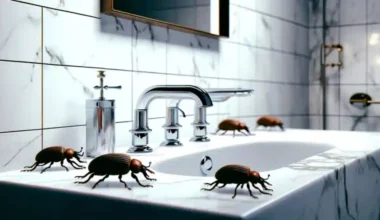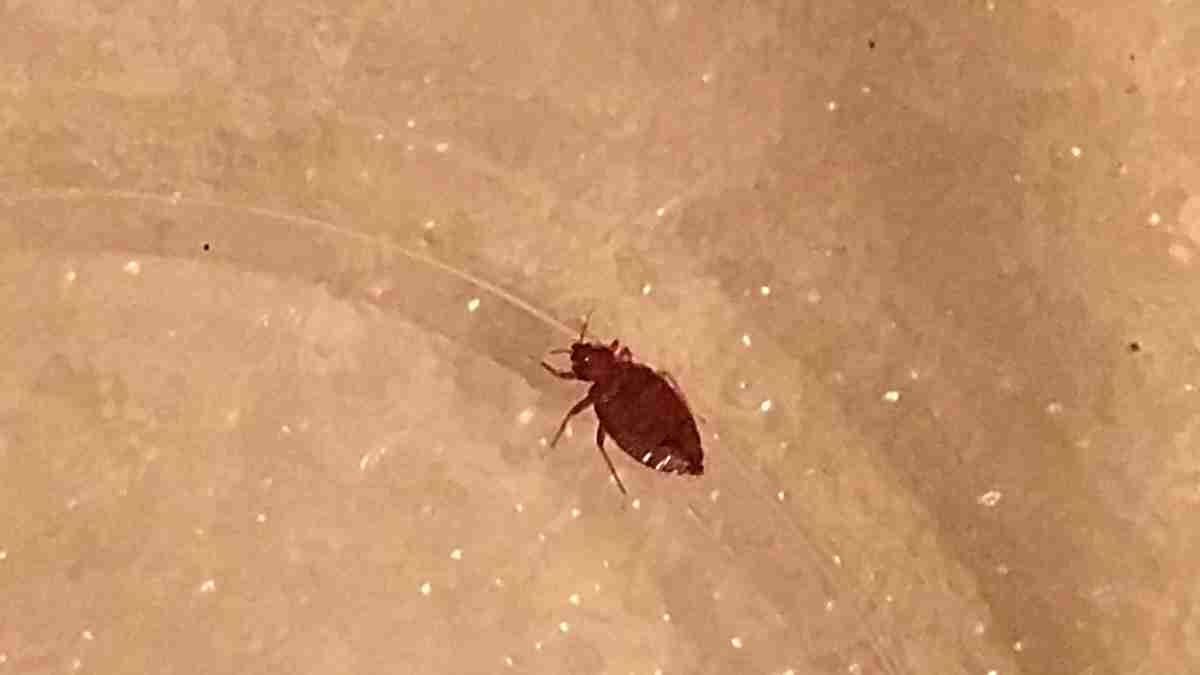Tiny bugs in your kitchen are a common problem, but they are not insignificant. To figure out how to get rid of them, you first need to identify what type of bug it is. This guide will help you with that and also suggest ways to eliminate these tiny bugs on kitchen counter and prevent them from coming back. You might need to clean the areas where the bugs are seen and decide whether to use a DIY method or call a professional pest control service.
Common bugs found in kitchens include moths, beetles, grain mites, and weevils. They usually feed on dry goods. If you see signs of these bugs in your cabinets or pantry, like webbing, cocoons, or the bugs themselves, you should check all your dry pantry goods. If you find many bugs in a container, you may need to dispose of the contents. If the container is reusable, make sure to clean it well before using it again.
You can get rid of moths, beetles, grain mites, and weevils by cleaning your shelves, cupboards, or pantry. Remove any food crumbs or debris that could be attracting them.
Why Are There Bugs on Your Counter?
Kitchen counters often attract bugs because of the easy access to food. Fruit flies, for example, are drawn to the smell of ripe or overripe fruit. These small bugs, tan to light brown and about 1/8 inch long, love to feed on fresh or decaying fruit and vegetables. Did you go shopping recently? That appears to be a fruit fly. Frequently, bugs catch a ride on fruits or vegetables you bring home from the store. However, you keep them away by storing food in cabinets or refrigerators.
Tiny Bugs on Kitchen Counter: What Are They?
Fruit Flies

Fruit flies are also attracted to sugary substances like juice, soda, and alcoholic drinks. You can get rid of fruit flies with insecticides, fly traps, or baits. To prevent them from coming back, remove any rotting fruits and vegetables and clean up any spills quickly.
Drain Flies and Cockroach Nymphs
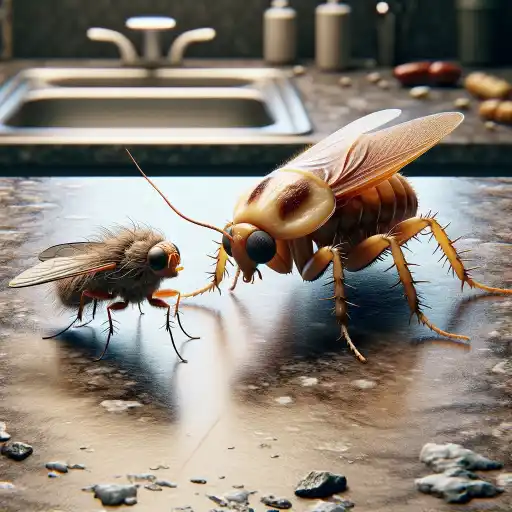
You will also find drain flies and roach nymphs on your kitchen counter, especially if your sinks and garbage disposals are nearby. Drain flies thrive in moist environments with organic matter.
How to Get Rid
You can control the presence of drain flies and roach nymphs by keeping your drains and disposals clean. Cockroach nymphs, the smaller, wingless version of adult cockroaches, are attracted to the same areas. If you see many of these tiny bugs on kitchen counter, you might need a professional pest control service to handle the infestation.
How to Keep Them at Bay
Make sure to prevent reinfestations of drain flies and cockroach nymphs. Simply keep your kitchen clean, seal up access points, and eliminate clutter where bugs can hide.
Weevils
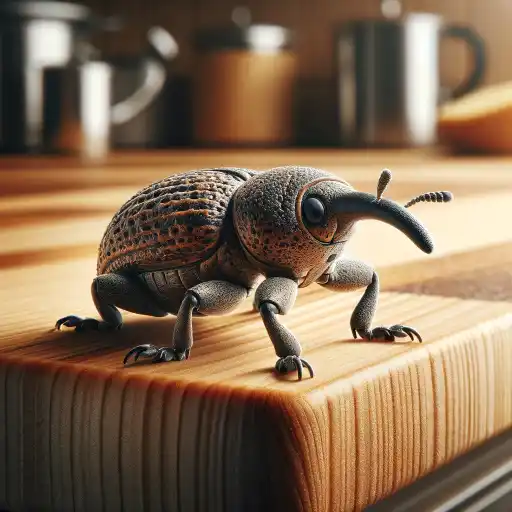
The tiny bugs on kitchen counter could be weevils. These are small, brown, beetle-like pests that are known for infesting food items. You notice them near the cereal boxes, rice, and flour bags, a common place where they thrive.
Black Ants

These ants live in colonies, and can quickly become a big problem in kitchens. They find their way inside through small openings and multiply fast.
How to Get Rid
You need to destroy their colony, which might involve using pepper, vinegar, boiling water, or diatomaceous earth on their nest. Ant baits can also be effective, as the ants carry the bait back to their colony, killing it.
Silverfish
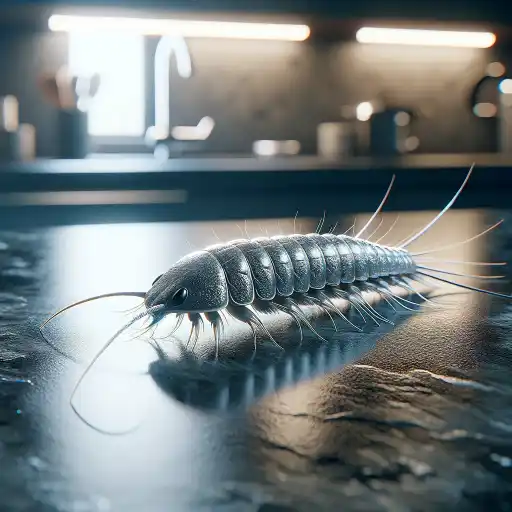
Another set of tiny bugs on kitchen counter is the silverfish. These are unique-looking insects, silver or gray in color, with scales covering their long bodies. They are about 1/2 to 1 inch long and prefer dark, moist places with high humidity, like basements, bathrooms, attics, laundry rooms, and kitchens. Silverfish are nocturnal and are more active at night. They typically hide in cracks or crevices during the day. Silverfish eat starchy materials like paper, books, cardboard, and fabric.
How to Get Rid
The best control method is to reduce humidity in your home with dehumidifiers or better ventilation, and clean dark, damp spaces regularly. Also, keep your kitchen clean, store pantry goods properly, and eliminate moisture.
How to Get Rid of Tiny Bugs on Kitchen Counter
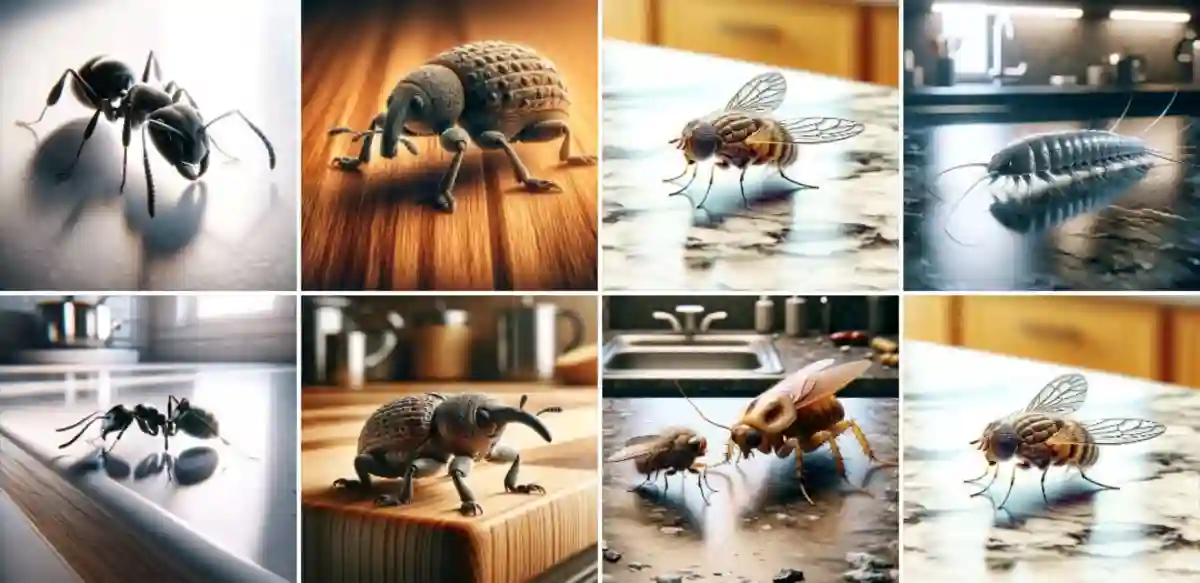
If necessary, get your local pest control professional involved, especially if you notice a high infestation. Now, let’s talk about how to get rid of these tiny bugs in the kitchen. You generally have to eliminate their food sources and regularly clean and store fruits and vegetables.
You can use your common household products to get rid of tiny bugs on kitchen counter. You might already have some of these items at home. Below are some of the options:
- Diatomaceous Earth. Spread it in entry points or along pest paths to kill small-bodied insects.
- Garlic. Fresh garlic or garlic powder repels most bugs.
- Baking Soda. Sprinkle it near ant entrances to keep them out.
- Peppermint Oil: Mix with water and spray in bug-prone areas.
- Borax. Mix it with sugar and spread it to kill cockroaches.
- Insect Traps. Use sticky, funnel, or light traps to catch and kill insects.
- Neem Oil. Mix with water and spray to disrupt bugs’ feeding and reproduction.
- Bay Leaves. Place in pantry or closets to deter beetles, moths, and weevils.
If you struggle to get rid of tiny bugs on kitchen counter, consider calling a professional pest control expert. Whether you are dealing with small black bugs on your counter or finding tiny dead bugs lying around, sometimes DIY methods aren’t enough. In such situations, get help from a reputable pest control company.
These experts will inspect your home and provide a treatment plan that will keep the tiny bugs from returning. You will also get an estimate of the cost. They are knowledgeable about different types of small black bugs and the best ways to eliminate them. And most importantly, professionals have the best tools and solutions to properly target and get rid of the kitchen bugs faster.
Read also: Tiny Brown Bugs in Kitchen Cabinets: What Are They?

